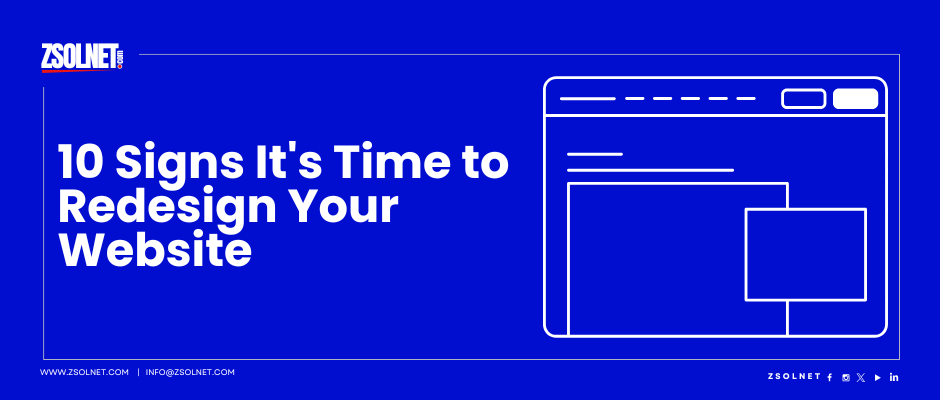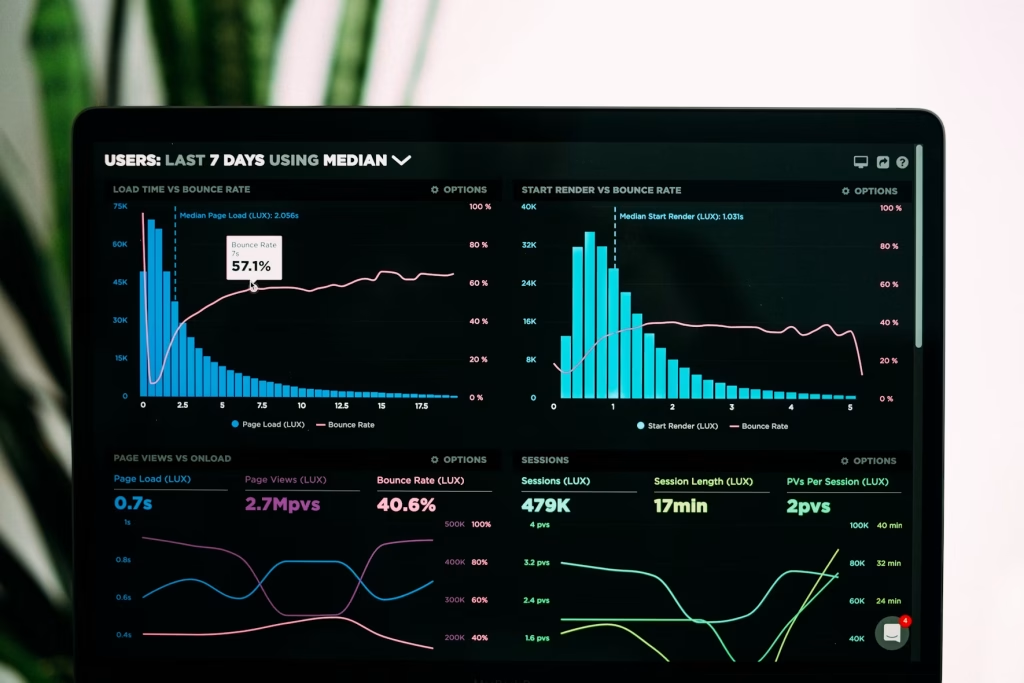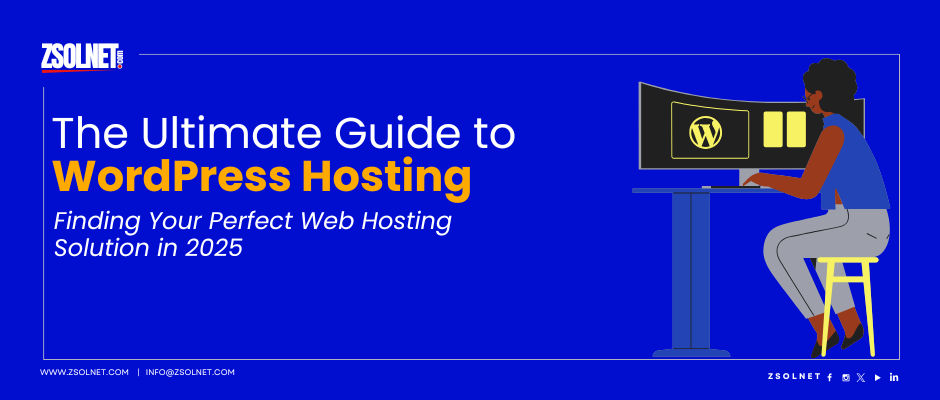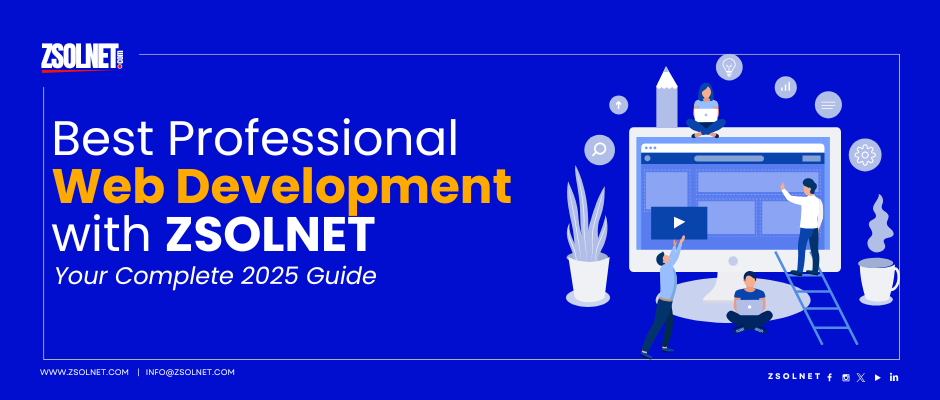Website redesign signs are crucial indicators that your online presence needs attention. In today’s digital-first business landscape, your website serves as your company’s virtual storefront, often creating the first impression for potential customers. But just like physical storefronts need occasional renovations, websites require periodic updates to remain effective. Many business owners struggle with recognizing these website redesign signs—balancing the investment against the potential returns.
The decision to redesign shouldn’t be based solely on aesthetics or a vague feeling that it’s “time for a change.” Instead, specific website redesign signs can signal when your online presence is no longer serving your business goals effectively. This comprehensive guide will walk you through ten telltale website redesign signs that indicate your site needs a refresh, helping you make an informed decision about this important business investment.
1. Slow Loading Times: A Critical Website Redesign Sign
In our fast-paced digital world, speed isn’t just a luxury—it’s an expectation. Research consistently shows that users abandon websites that take longer than 3 seconds to load. This impatience isn’t just inconvenient; it directly impacts your bottom line.
Key indicators of speed issues:
- Pages consistently take more than 3 seconds to load
- High bounce rates (over 70%) on landing pages
- Analytics showing visitors leave before pages fully render
- Mobile loading times significantly longer than desktop
Why this matters: Every second of delay reduces customer satisfaction and increases abandonment rates. Google also considers page speed as a ranking factor, meaning slow sites get pushed down in search results.
Solution: Begin with a comprehensive speed test using tools like Google PageSpeed Insights or GTmetrix. Common fixes include optimizing image sizes, implementing browser caching, minifying CSS and JavaScript files, and potentially upgrading your hosting plan to accommodate growing traffic.
2. Your Website Isn’t Mobile-Responsive
With mobile devices accounting for over 50% of web traffic worldwide, having a mobile-responsive website isn’t optional—it’s essential. If your site was built before responsive design became standard practice (around 2015-2016), it likely delivers a subpar mobile experience.
Signs of poor mobile responsiveness:
- Text appears tiny and requires zooming on smartphones
- Navigation menus are difficult to tap accurately
- Images overflow their containers or appear distorted
- Forms are cumbersome to complete on touch screens
- Horizontal scrolling is required to view complete content
Why this matters: Beyond the obvious user experience issues, Google now uses mobile-first indexing, meaning it primarily uses the mobile version of your site for ranking and indexing. A non-responsive site will struggle to compete in search results.
Solution: Implement responsive design principles that automatically adjust your layout based on screen size. This isn’t simply making your desktop site smaller—it requires rethinking navigation, content hierarchy, and interaction elements for touch-based interfaces.
3. Outdated Design Elements Make You Look Unprofessional
Visual trends evolve rapidly in the digital space. Design elements that felt cutting-edge five years ago may now signal to visitors that your business is behind the times. This perception can unconsciously influence how potential customers view your products, services, and overall brand reliability.
Outdated design elements to watch for:
- Flash animations (largely obsolete technology)
- Small font sizes and cluttered layouts
- Excessive use of stock photography
- Outdated color schemes and typefaces
- Generic templates that scream “template website”
- Carousel sliders taking up prime homepage real estate
Why this matters: Visual first impressions happen in milliseconds. An outdated design can immediately trigger doubt about your company’s relevance and attention to detail, potentially sending prospects to more contemporary-looking competitors.
Solution: Research current design trends in your industry while staying true to your brand identity. Focus on clean layouts with purposeful white space, modern typography, authentic photography, and intuitive navigation patterns. Consider consulting with a professional designer who specializes in your industry.
4. Poor User Experience (UX) Drives Away Potential Customers
User experience encompasses how people interact with your website—how easily they find information, complete tasks, and navigate between pages. Poor UX creates friction that diminishes trust and increases abandonment rates.
Signs of problematic user experience:
- Confusing navigation structure with buried important pages
- Lack of clear calls-to-action on key pages
- Inconsistent design elements across the site
- Important information requiring multiple clicks to access
- Contact information that’s difficult to locate
- Lack of search functionality on content-heavy sites
Why this matters: Today’s users have high expectations set by major websites and applications. When your site feels cumbersome by comparison, users attribute this frustration to your brand, not just your website.
Solution: Conduct user testing with real customers or unbiased third parties. Watch how they navigate your site and where they struggle. Heat mapping tools can also reveal how users interact with your pages. Use these insights to streamline user journeys, particularly for high-value conversion paths.
5. Your Content Management System (CMS) Is Difficult to Update
An effective website isn’t static—it requires regular updates to content, products, team information, and blog posts. If your current system makes these updates tedious or requires technical knowledge for simple changes, you’re likely updating less frequently than you should.
Signs your CMS needs upgrading:
- Basic text changes require developer assistance
- Adding new pages disrupts your site navigation
- Media uploads frequently cause formatting issues
- Staff avoids making updates due to system complexity
- Your system lacks modern features like content scheduling
Why this matters: Marketing agility depends on your ability to quickly update your digital presence. When website updates become bottlenecked, your online messaging grows stale and opportunities are missed.
Solution: Modern CMS platforms like WordPress, Drupal, or Webflow offer user-friendly interfaces with robust capabilities. During redesign, prioritize systems that match your team’s technical comfort level while still providing the flexibility you need. Consider the learning curve for your staff when selecting a new CMS.
6. High Bounce Rates and Low Conversion Rates Signal Fundamental Issues
Analytics don’t lie. If visitors consistently arrive at your site only to leave immediately (high bounce rate) or fail to take desired actions like making purchases or submitting contact forms (low conversion rate), your website has fundamental problems that cosmetic changes alone won’t fix.
Concerning analytics patterns:
- Bounce rates consistently above industry averages
- Session duration under 30 seconds on key landing pages
- Conversion rates significantly below industry benchmarks
- High exit rates on pages that should lead to conversions
- Shopping cart abandonment rates above 70%
Why this matters: These metrics directly impact your bottom line. Each bounced visitor represents a potential customer lost, often permanently, as many won’t return after a negative first experience.
Solution: A data-driven redesign process should begin with thorough analytics analysis. Identify specific pages with problematic metrics and conduct A/B testing on redesigned versions. Focus on addressing underlying user needs rather than superficial changes, and ensure your value proposition is immediately clear to visitors.
7. Your SEO Performance Has Plateaued or Declined
Search engine visibility remains a critical traffic driver for most businesses. If your organic search traffic has stagnated or declined despite ongoing content efforts, your website structure may be holding you back.
SEO red flags calling for redesign:
- Declining organic traffic despite content investment
- Poor mobile search rankings compared to desktop
- Site structure that prevents proper topic clustering
- Inability to implement schema markup effectively
- Technical issues flagged in Google Search Console
- Difficulty optimizing page titles and meta descriptions
Why this matters: Modern SEO success depends increasingly on technical factors like site architecture, structured data, and mobile optimization—elements that often require significant structural changes to implement properly.
Solution: Begin with a comprehensive SEO audit that examines both content quality and technical factors. Ensure your redesign incorporates a logical site structure that supports topic clusters, implements proper header hierarchy, facilitates internal linking, and allows for structured data markup. Most importantly, develop a careful migration plan to preserve existing SEO equity when launching the new site.
8. Security Vulnerabilities Put Your Business at Risk
Website security isn’t just for e-commerce businesses—every organization with an online presence faces potential threats. Older websites often run on outdated systems with known security vulnerabilities that hackers actively exploit.
Security concerns that warrant redesign consideration:
- Running an outdated CMS version with known vulnerabilities
- Lack of HTTPS implementation across all pages
- No regular security patching process
- Previous security incidents or unexplained site behavior
- Collection of user data without proper security protocols
- Outdated third-party plugins or extensions
Why this matters: Beyond the obvious risks of data breaches, security issues can lead to downtime, blacklisting by search engines, and permanent damage to customer trust. Google also gives preference to secure sites in search rankings.
Solution: A redesign offers the opportunity to implement security best practices from the ground up. Choose a CMS with a strong security track record and regular updates. Implement proper data encryption, secure forms, and administrative access controls. Consider a hosting provider that specializes in security for your platform of choice.
9. Your Website Doesn’t Reflect Your Current Business Offerings
Businesses evolve over time—adding services, refining product lines, targeting new markets, or pivoting strategies. When your website no longer accurately represents what your business actually does, it creates disconnects that confuse potential customers.
Signs of misalignment between website and business reality:
- Services or products mentioned that you no longer offer
- Key offerings buried deep in site navigation
- Messaging that targets outdated customer personas
- Mission and vision statements that no longer match company direction
- Team pages featuring employees who have left the organization
- Outdated case studies that don’t showcase your best work
Why this matters: Your website should be your most current, accurate business representation. When it falls out of sync with reality, it creates confusion, diminishes trust, and fails to attract the right prospects.
Solution: Begin the redesign process with a comprehensive content audit. Identify outdated information, prioritize current offerings, and realign messaging with your current business strategy. This is also an ideal time to refresh your brand messaging to ensure it resonates with your current target audience.
10. Your Competitors’ Websites Outshine Yours
While you shouldn’t redesign solely because a competitor did, a significant gap between your online presence and industry standards can put you at a competitive disadvantage. When potential customers compare options, your website directly influences their perception of your business quality.
Competitive disadvantages to assess:
- Competitors offer online features you don’t (appointment booking, calculators, etc.)
- Their sites load significantly faster than yours
- They have more engaging, interactive content formats
- Their websites feature more compelling calls-to-action
- Their mobile experiences are noticeably superior
- They’ve implemented newer technologies like AI chatbots or personalization
Why this matters: In the absence of other differentiating factors, website quality often becomes a deciding factor for prospects comparing similar businesses. Falling noticeably behind industry standards can create an impression that your business is less innovative or customer-focused.
Solution: Conduct a competitive analysis of 5-10 direct competitors’ websites. Note features, content types, and user experience elements that appear consistently across top competitors. Use this analysis to identify must-have features for your industry while also spotting opportunities to differentiate your business through unique website elements.
Conclusion: Responding to Website Redesign Signs
If several of these website redesign signs resonate with your current situation, it’s likely time to consider updating your online presence. Recognizing these website redesign signs early can save you from losing customers and revenue. However, redesigns require careful planning to be successful. Rather than rushing into a complete overhaul, consider these next steps:
- Conduct a thorough audit of your current website’s performance, content, and user experience
- Define clear objectives for what a redesign should accomplish for your business
- Prioritize improvements based on business impact rather than just visual appeal
- Develop a realistic budget that accounts for design, development, content creation, and testing
- Create a timeline that minimizes disruption to your ongoing business operations
Remember that addressing website redesign signs isn’t just about looking better—it’s about performing better. By focusing on the fundamental issues identified in this article, you’ll create a digital presence that not only impresses visitors but also drives meaningful business results.
At ZSOLNET, we specialize in helping businesses recognize and address website redesign signs, transforming outdated websites into powerful marketing and sales tools. We’ve partnered with industry leaders like External Resource: HubSpot and External Resource: Google PageSpeed Insights to provide comprehensive website analysis.
Contact us today for a free website evaluation to determine if your site is showing these website redesign signs. Also, check out our website redesign process guide to learn how we approach these projects for maximum impact.




